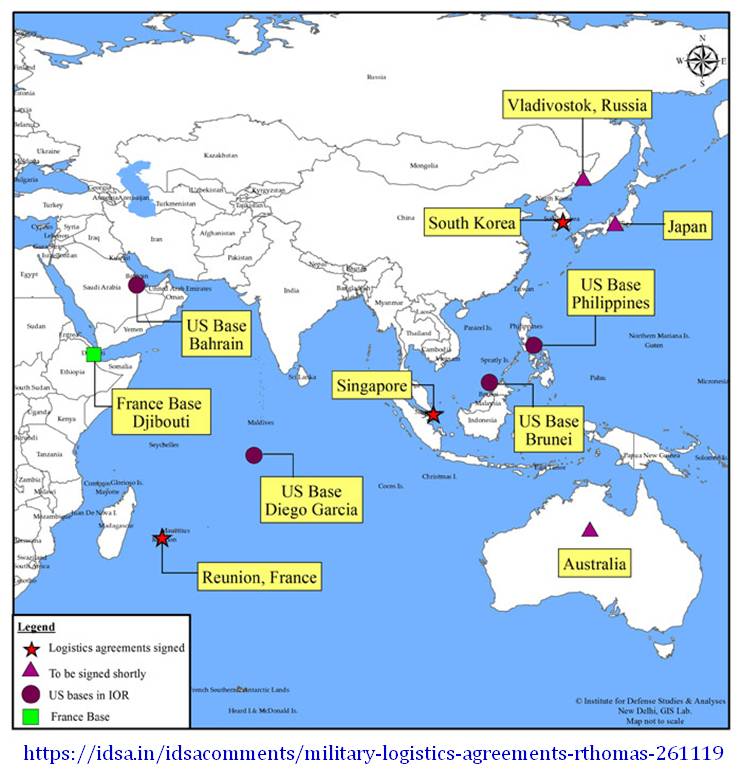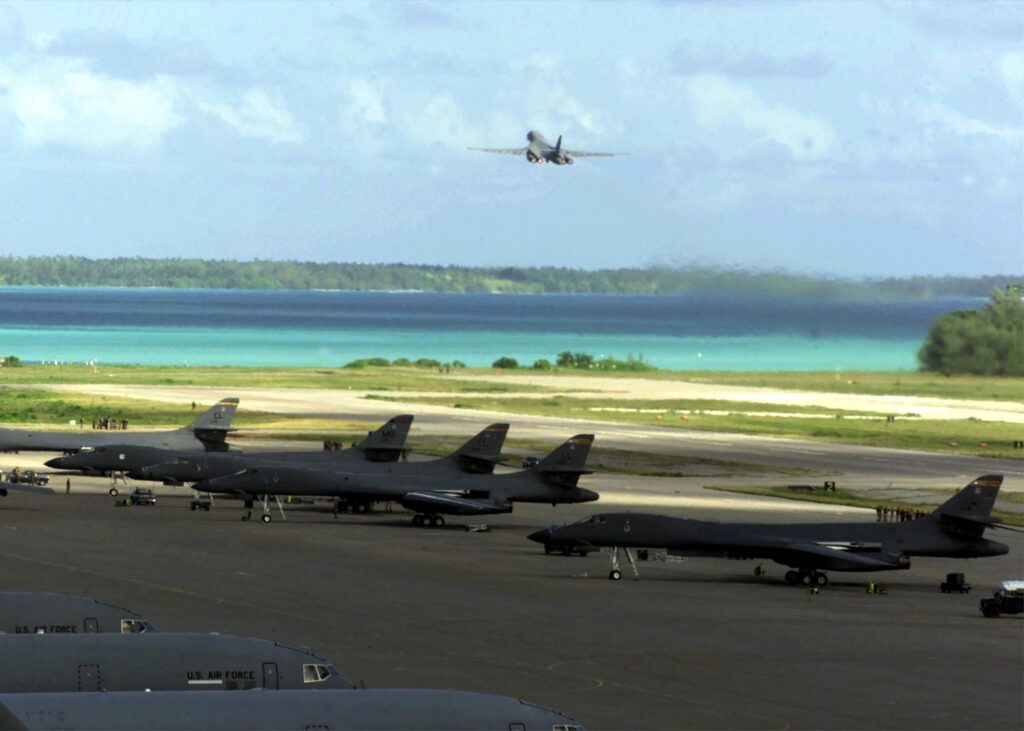
The Indian Ocean Strategic Research Centre, is a hatching Centre ,where exploration meets innovation in unraveling areas of the vast and dynamic Indian Ocean region. As stewards of knowledge, we are dedicated to conducting cutting-edge research that delves into the intricacies of the Indian Ocean, hence we engage in exploring and preserving its eco-systems, follow geopolitical dilemmas of stakeholder / regional nations , study and promote Cultural diversity within the region and garner sustainable development and enterprise to promote Global Maritime Trade and Travel.
Our commitment lies in fostering a deeper understanding of this Vital Resource and Potential Filled Maritime Expanse and thereby contribute much needed, well researched strategic solutions, so that stakeholders and decision makers ,create transforming and vision casting policies that would inevitably create vibrant advancement and progress of the region.
Join us on a journey of discovery as we navigate the depths of research, striving to convert every challenge into an opportunity, whilst we revolutionize and harness the thriving potential filled future of the Indian Ocean Region.
Protecting and Developing the Environmental Sustainability of the Indian Ocean
he Indian Ocean plays a significant role in shaping global climatic conditions and sustaining a sense of balance among various ecological systems. Oceans are the cradles that nurture biodiversity and ecological diversity. However, the Indian Ocean has faced many environmental challenges in the past few decades.
Due to global warming resulting in increases in temperature, the equilibrium of the Indian Ocean is disrupted and the coastal areas of several countries in the Indian Ocean region experience sea erosion as a result. Islands situated in the Indian Ocean like the Maldives are at the risk of being submerged. Similarly coastal areas in this region experience severe sea erosion. As a result, the existence of marine wetland eco systems are under threat posing serious threats to biodiversity.




The biodiversity of the ecological system is under threat due to the rising sea temperatures and increased salinity levels of the sea. Further, plastic waste, oil spills and industrial waste post a sizable threat to the India Ocean. Large quantities of plastic waste are added to the oceans on a daily basis resulting in large-scale environmental pollution.
Marine wetlands and mangroves are a natural defense against sea erosion. The destruction of mangroves takes places due to rising sea levels and disruptive destruction by people. Hence the destruction of the mangroves poses a serious threat to the Oceans and Oceanic communities of the World.

Solutions to the environmental issues faced by the Indian Ocean region can be sought through Scientific Research and Innovation making it possible to protect and develop the environmental sustainability and opportunity creation,of the Indian Ocean. The nations, communities and individuals that reside in the Indian Ocean region and it’s connecting Marine Lanes and Ports of call ,should be empowered collectively with researched solutions, to gain sustainable commercial yield whilst promoting Oceanic conservation ,in this potential filled Maritime Region.
Creating a common platform to act against Global Warming and strengthening legal frameworks against marine pollution, are remedial strides that can be taken in order to protect the Indian Ocean region for successive generations. The Indian Ocean Strategic Research Centre (IOSRC) intends to mobilize and empower communities for this very purpose.

geopolitics and maritime trade in the indian ocean
The Indian Ocean region is of tremendous Geopolitical significance because it is strategically located amidst many continents and sea routes. Hence the Indian Ocean facilitates intercontinental communication and Productive Trade Engagement. It is a strategic trade and Maritime Hub of the World.
Since antiquity the Indian Ocean region has engaged in trade, cultural and technological exchange relations with Europe through the Indian Subcontinent, the Middle-East, Eastern Africa, Southeast Asia regions.
In the 15th century, Colonial Powers like the Portuguese, Dutch, French and the British sought to profit from the prosperity of the Indian Ocean Region. In order to do so, these colonial powers strove to dominate the Maritime Routes in the Indian Ocean region. They did so, in order to ,access and extort the rich resources of the countries in this region. The economic prosperity of the above mentioned colonial powers was founded on their success in exerting power in the Indian Ocean region and colonizing the countries in this region.
By the 21st century, the Indian Ocean had become an integral part of World Trade. Approximately 80% of Global Trade occurs by Maritime Trade ,of which over 40% takes place in and through the Indian Ocean region. Almost 5/8 of Global Cargo Ships and 2/3 of all Oil Tankers travel through the Indian Ocean region. World trade is made possible as the Indian Ocean connects four continents. This places the Indian Ocean region to be the epicentre of Global Trade , Commerce and Security.
Hence all Global Super Powers converge their battle for dominion, in this same Indian Ocean Region. Countries like the United States of America, China, Russia and India implement various development and military projects in the Indian Ocean region. They have independently paved the way for the implementation of projects of geopolitical proportion.
The United States of America has placed a network of security bases circling the Indian Ocean.
China is building trade, naval and maritime ports/ infrastructure facilities in countries of the Indian Ocean region through the BRI project.
India too has entered the geopolitical race , concentrated around the Indian Ocean region , they too are expanding their tentacles spread in the region through implementing various commercial ventures , acquisitions of valuable regional assets and security operations.
The Geopolitical significance of the Indian Ocean region is based on the growing population demands of the region. There is an ever growing global market in this region.
The certain nations that form the BRICS block of nations are also concentrated in this region. It is believed that by 2050 the four BRIC economies would dominate the global economy. Hence these nations are the
world's fastest-growing emerging markets of the world. This is due to the low labor costs, favorable demographics, and abundant natural resources etc. So it's evident that there is a transition of Western Dominated World Economy to move Eastwards. Hence Maritime Routes and Harbours connected to the Indian Ocean Regions are growing in their Global contribution and Strategic Global Impact.
The Indian Ocean region is also rich in their cultural and ancient archeological heritage. This region was bedrock of many ancient civilizations and ancient Trade routes. Therefore even upto date World powers use diplomatic relations, regional cooperation, economic projects and cultural factors to strategically exert geopolitical pressure in this region.
The Indian Ocean Strategic Research Centre (IOSRC) aims to study the Geopolitical Process in the Indian Ocean region. This will be done by the collective, collaborative, deliberations and engagements of multi disciplinary specialists, experts and professionals ,who will do extensive research of the growing trends, challenges , demands and opportunities, of the Indian Ocean region and present proposals to regional governments and stakeholders, how there can be a pragmatic system to ensure Geopolitical Stability , Justice ,Equity and Fair Play.
Since historical times, the Indian Ocean has played an integral role in connecting human civilizations, bringing goods and services to peoples and has functioned as one of the busiest, strategically placed trade and cultural centers of the world and is a key factor that influences the direction of the global economy. The strategic placement of the Indian Ocean enables the facilitation of international trade. Some of the main maritime routes that connect Asia, Africa, the Middle East and South East Asia are connected through the Indian Ocean. The Normus Strait, the Bab al Mandab Strait and the Malacca Strait are important points that connect the Indian Ocean to other oceans. The Middle-East is a primary source of energy in the world and is connected to the Indian Ocean maritime routes where 2/3 oil tankers carry their crude oil through the Indian Ocean. Further, 5/8 cargo ships carry their cargo through the Indian Ocean as well. The Indian Ocean maritime routes facilitates linkages among the main economies of the world and enables international trade to take place. In the near future, the Indian Ocean region will be the most significant and prosperous economic region in the world. The Indian Ocean Strategic Research Centre aims to conduct research that will help to develop economic collaboration and coordination in the Indian Ocean region.
Cultural Diversity
The cultural diversity of the Indian Ocean region spans from cultures that are hidden from the rest of the world like that of the bow and arrow carrying tribal populations that live on the Andaman Islands as if they were in the stone age to those who live in modern technologically advanced cities.
While the Indian Ocean region spans across a vast geographical area, it also boasts of being the birthplace of the development of human processes throughout history. Such processes are still being birthed and added to the world today. Cultural diversity is a factor that has propelled the progress of human civilization. Ethnic diversity, diverse languages, diverse forms of art, diverse value systems, diverse systems of morality, sports and international trade has contributed to the richness of the cultural diversity in the region.
Thousands of years ago, people who lived in the South-East Asian region began to build various types of seafaring vessels and began to travel across the western region of the Indian Ocean to East Africa. Such travel had a significant impact on the cultural diversity of the Indian Ocean region. Thereafter, these seafarers travelled to the West African region and from there to the Middle East and then to the Mediterranean Sea and from there to Europe. Such travels resulted in an intercontinental exchange of nationals, languages, value systems, sports, arts, dance and music. Those who experienced this cultural diversity and were part of it, developed very quickly while those who didn’t; like the bow and arrow carrying tribals of the Andaman Islands, still remain underdeveloped and secluded from the developing world. Therefore, cultural diversity is key to the development of language, the arts, food habits, value systems, moral systems, international trade ad unity among nations. Societies that value cultural diversity, contribute to the progress of the society. They give rise to new human civilizations. If any society rejects cultural diversity, that society becomes a backward society and regresses. They will not be open to new knowledge. The result will be the coming into existence of extremist, tribalist, backward societies that can be detrimental to the progress of the human civilization.
There is a dearth of research findings and reports on the cultural unity facilitated and presented to the world by the Indian Ocean region in terms of ethnic, religious, linguistic, arts, value systems, moral systems and international trade. There is no information available on any Field Experiments and Research conducted in this region other than that conducted by Auguste Mussenden.
Accurate and timely Field Research will be of great significance to facilitate the transformation of the Indian Ocean region into a prosperous region in the near future. It would also enable the strengthening of ties and Peacebuilding among the nations of the Indian Ocean region.
Sri Lanka is strategically placed at the center of the Indian Ocean and this vantage point makes Sri Lanka ideally situated to coordinate regional collaborations for Field Research in the Indian Ocean region. The Indian Ocean Strategic Research Centre aims to facilitate and coordinate Research collaborations among 13 nations from the Western African region, 22 nations from the Asian region, Australia and 2 European nations in the Indian Ocean region in fields like ethnicity, language, value systems, moral systems, the arts, sports and international trade by connecting professionals from diverse fields, linking Universities and Academical Institutions.
Seaweed Research Articles
- Amid Winds and Waves: Sri Lanka and the Indian Ocean. Read Article
- World’s largest tropical seaweed farm begins operations. Read Article
- Sinking Seaweed. Read Article
- The Magic of Seaweed and Carbon Credits Opportunities. Read Article
- Cultivation and utilisation of red seaweeds in the Western Indian Ocean (WIO) Region. Download Article
- Seaweed Biodiversity of India: Reviewing Current Knowledge to Identify Gaps, Challenges, and Opportunities. Download Article
- Sri Lankan seaweeds: Methodologies and field guide to the dominant species. Download Article
- Composition analysis of selected Sri Lankan Seaweed. Download Article
- Extraction of Crude Protein from Sargassum crassifolium, Harvested from South Coast of Sri Lanka and Determination of Functional Properties of the Crude Extracts. Download Article
- Distribution and Diversity of Seaweed Species in South Coastal Waters in Sri Lanka. Download Article
- Analysis of metals and metalloids present in Sri Lankan dried seaweeds and assessing the possibility of health impact to general consumption patterns. Download Article
- Programme for the implementation of a Regional Fisheries Strategy for the Eastern and Southern Africa and Indian Ocean Region. Download Article
- Mineral Content of Selected Seaweed Varieties in Southern and North Western Sea of Sri Lanka. Download Article
- Cornwall researchers discover huge ancient seaweed bed. Read Article
- New red seaweed species discovered on Indian coasts. Read Article
- Seaweed farming offers a boost for Sri Lanka’s ‘blue economy’ ambitions. Read Article
- Seaweed resources in Sri Lanka: culture of Gracilaria and intertidal surveys. Download Article
- Anticancer and antioxidant effects of selected Sri Lankan marine algae. Download Article
- Characterization of sea lettuce (Ulva lactuca) from Matara, Sri Lanka and development of nutribars as a functional food. Download Article
- Preliminary screening of the aqueous extracts of twenty-three different seaweed species in Sri Lanka with in-vitro and in-vivo assays. Read Article
- BBNJ Treaty and the ITLOS Advisory Jurisdiction. Download Article
- Global heating pushes coral reefs towards worst planet-wide mass bleaching on record. Read Article
- Morphological Investigations On Seaweed Biodiversity At Visakhapatnam Coast, Bay Of Bengal, India. Download Article
- Ecology of seaweeds along Thirumullavaram shore line, Kerala. Download Article
- Mapping the Indian Ocean Region – Carnegie Endowment for International Peace. Download Article
- Geopolitical competition and economics in the Indian Ocean region. Read Article
- The fight over fish attractors in the Indian Ocean. Read Article
- Diving deep into the life of green sea turtles. Read Article
- Seaweed Could Have ‘Massive’ Climate Mitigation Impact, Study Finds. Read Article
- Aquaculture Innovation Forum: Can genetics solve the sea lice crisis? Read Article
- What Is Happening in the Indian Ocean? Read Article
- Blue finance: Why investing in responsible aquaculture is good for the people and planet Read Article
- How islanders are saving their Indian Ocean coral reef. Read Article
- Ceylon and the Underwater Archaeologist. Read Article
- Researchers discover underwater submarine canyons in month-long survey of sea floor. Read Article
- A regional agreement aims to save a tropical paradise in trouble. Read Article
- Crossroads of Crime: Drug Trafficking Networks in the Indian Ocean Region. Read Article
